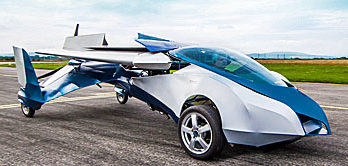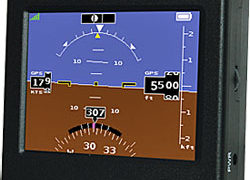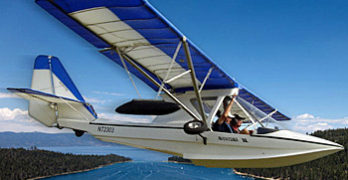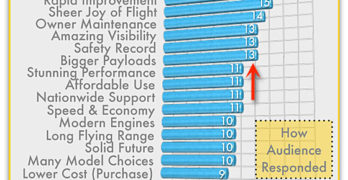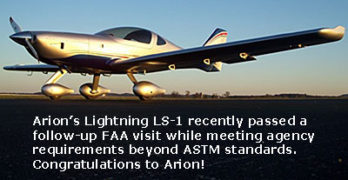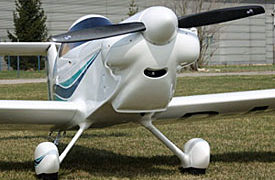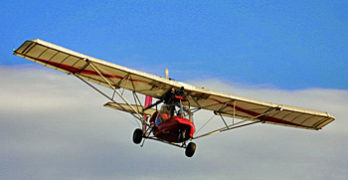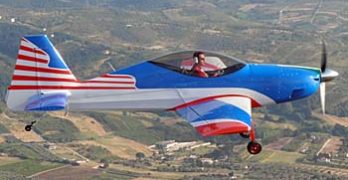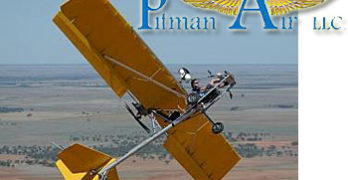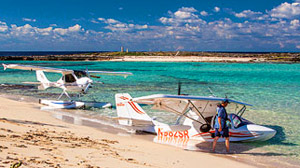After watching the Terrafugia Transition (video) fly from on the main airshow runway at AirVenture 2013, many pilots began to view the LSA flying car as more than a media magnet. The project, which has indeed generated an amazing amount of mainstream media attention, proved itself to be a real aircraft that can indeed drive like a car. More recently the Massachusetts company amped up their game with a new model, TF-X, now in early design stage. Meanwhile, the Transition, also evolving as a design, garnered the attention of — and a $2.7 million investment from — DARPA, the U.S. government’s Defense Advanced Research Products Agency. Where some once saw a novelty product only of interest to those intrigued by a “flying car,” more began to view this as a genuine aircraft. However, Terrafugia isn’t the only company pursuing such a unique machine.
One of my favorite quotes comes from Molt Taylor, the prime mover behind Aerocar, perhaps the first “practical” flying car and one that earned certification.
Search Results for : Flight Design
Not finding exactly what you expected? Try our advanced search option.
Select a manufacturer to go straight to all our content about that manufacturer.
Select an aircraft model to go straight to all our content about that model.
Are You D2?…Tiny Instruments from Dynon & Garmin
An amazing thing happened as we all prepared to go to AOPA last-ever annual show in the sprawling Dallas-Fort Worth metroplex. Two top suppliers to the LSA sector came out with products bearing almost the same name. However, they’re quite different, fun, and well, yes … surprisingly practical. So, are you D2? Even the Star Wars robot of a similar sounding name might have desired these gizmos, neither of which were remotely possible back in the late 1970s when that movie franchise began.
Dynon’s D2 — The maker of the ubiquitous SkyView glass panels installed in so many higher end LSA has a smaller product that sells well in the GA world, where non-certified equipment cannot be mounted with FAA approval. So, just stick a D1 to the windscreen and you get a mini-Dynon panel for your older, round-gauges aircraft. Now, Dynon has introduced the D2, a second model to what they call their “Pocket Panel product line.” D2 adds WiFi connectivity to allow flight data to be sent to iPad, smartphone, and tablet aviation applications, and has a second screen with a G-Meter (photo).
LSA Seaplane Companies Cluster in Central Florida
Icon Aircraft receives a high percentage of the attention paid to LSA seaplanes. They’ve worked hard on marketing and been quite successful; their Facebook page has nearly 300,000 “Likes!” Yet, as I’ve written, this is a growing subset within the LSA industry with several interesting designs already flying plus new ones to come that are really going to widen people’s eyes. However, some of that remains in the future while we have present-day success stories. If you want a seaplane you can afford and you want it soon, you have several choices, for example: Progressive Aerodyne’s SeaRey and the hot little SeaMax, both of which are SLSA approved, plus Edra Aeronautica’s Super Petrel LS, and in the world of light kits, don’t forget another longtime player, Aero Adventure. The latter Florida company recently reported news.
“Here We Come Tavares,” exclaimed a recent newsletter from Aero Adventure!
Survey Results for Reasons to Buy LSA
At the Midwest LSA Expo that concluded a few days back, I delivered a presentation called “20+ Reasons to Buy an LSA.” However, to handle the subject a little bit differently, I turned it into an audience participation exercise. As I presented each slide of one particular reason, I explained what was meant and elaborated on how each reason made LSA different from other sorts of aircraft someone might consider buying. Then, I asked the audience to raise their hand if that reason was one that might cause them to buy a Light-Sport. I advised that no one was recording their names, so they remained anonymous. Each person could raise their hand as many times as they wanted or never raise their hand if they chose. No one had to participate. About 35 people listened and somewhere between 15 and 25 answered most of the time. The following chart shows the responses.
Simple Aircraft (Like LSA) Need Simple Rules
In this post I’m going to do something potentially risky. I am going to make some statements about the politics of aircraft certification. While rather dull, this subject is nonetheless something pilots and others feel rather strongly about as the safety of aircraft — for persons in or under aircraft — is involved. Doesn’t everyone except a handful of thrill seekers care deeply about safety? I certainly do yet I feel it’s time for some new directions. I fully expect not everyone will agree, but I feel strongly that these statements need to be made. So, here goes …
My term as Membership Secretary of ASTM’s F37 LSA committee will complete later this year; I will be term limited out. That’s perfectly fine … I’ve done my duty for several years. ASTM’s F37 committee is the group that wrote and updates the standards used to gain acceptance for Light-Sport Aircraft. F37 is populated by some exceptional people that are largely unsung heroes for all the hard work they’ve done with little recognition.
SD-1 Minisport: the First SLSA Single Seater?
We looked at this airplane at AirVenture Oshkosh 2012 (video). At that time the Orem, Utah team presented their wood and composite airplane as a kit. In a year a lot changed and now SkyCraft is pushing ahead with plans for a Special LSA that will be delivered fully built for the modest price of $54,850. CEO Tyler Ives says the company is ready to declare compliance to ASTM standards and after they get a chance to prove that to FAA, the SD-1 Minisport might become the very first single seat Special Light-Sport Aircraft, a distinction that once earned will last forever. The only other candidate presently known is the Tecnam Snap aerobatic LSA. Given that Tecnam has achieved more LSA models than any other company, you should never count them out so the race is on to be the first-ever single seat SLSA.
Oshkosh 2013 Elements, Part 1: King Paul Mather
Elements are basic components of nature. I intend Oshkosh Elements to be great ideas that are not airframes or engines. I found a few activities or ideas worthy of inclusion in this multipart series. To begin, many folks understand various forms of competitions happen at these big shows. Many aircraft are judged for their building or restoring achievements. Others participate in races or airshow routines. And, of course, all vendors compete for the dollars of visitors. In another informal competition, aircraft vendors try to deliver lots of demonstration flights. I’ve heard tales about this for years. At AirVenture 2013, Progressive Aerodyne‘s Kerry Ritcher, designer and pilot extraordinaire of the SeaRey, told me about flying so many demo flights in 2012 that his team brought him sandwiches to wolf down in the airplane while they loaded another person in the passenger seat. He didn’t even have time to get out for a stretch.
Tecnam Acquires Snap; Partners with SportairUSA
Snap! Crackle! Pop! It’s not just for breakfast anymore. Among the vast array of light aircraft I am only aware of a few other single seat models … Here’s a U.S. example (video) and here’s some European single seaters. None of these has yet gone through the process to become Special LSA but that might be changing now that Italian giant Tecnam acquired a, well … snappy little bird with a catchy name. Tecnam already has the broadest number of models in the LSA space but just to be sure of keeping this title, the company recently announced their new low wing Astore and now they follow with Snap.
Americans have seen Snap before, but Tecnam gives it much more market presence. Snap is a single seat, low wing, fixed landing gear aircraft with a high power-to-weight ratio and the capability to perform aerobatics with low operating costs.
Dragonfly 912 Becomes Newest SLSA #132
You might not be in the market for a super slow flying aircraft like Dragonfly that stalls at less than 20 mph. You might not care that Ed Pittman took the lead winning Special LSA approval on behalf of Australian businessman and hang gliding pioneer Bill Moyes and American Dragonfly designer Bobby Bailey. However, as a longtime hang gliding enthusiast, I can attest on behalf of many who enjoy soaring flight in hang gliders that Dragonfly is a critically important aircraft. The unusual aircraft was purpose designed to tow a hang glider aloft so it can be released — commonly at 2,000-2,500 feet and often right in a column of thermal lift — to allow it to achieve soaring flight without the benefit of a mountain from which to launch. One of the most successful aerotug airparks, called Wallaby Ranch, is located a few miles south of Disney World in Florida.
Still Expanding LSA Seaplane Development
“Isn’t it just a niche market?,” asked a reader in a recent email. The query came after he read about a flurry of new seaplanes and the writer wondered if it could be worth all the investment pouring in to these projects. Development progress in this particular sector-within-a-sector (LSA seaplanes) seems to be far outdistancing development in other parts of the aviation world. So, are efforts to develop increasingly sophisticated LSA seaplanes economically justifiable? It’s a worthy question. Another answer: “Well, why not?” An amphibious LSA seaplane can land on water or land, could fly as fast or nearly as fast as a land plane. They can look cleaner with gear that disappears. They already have another 110 pounds to work with (though admittedly much of that is needed simply to achieve an amphib seaplane and even that is not enough for all manufacturers). If you want an LSA, why not one that’s more versatile?
- « Previous Page
- 1
- …
- 91
- 92
- 93
- 94
- 95
- …
- 147
- Next Page »


